With so many SEO practices, it’s nearly impossible to know what to keep doing and what to stop completely. Some articles provide up to 200 SEO tips, but that’s tiring to read and too difficult to implement.
So why don’t we focus on well-tested and trusted SEO techniques that help most publishers grow their organic traffic?
Is link building still relevant? Should on-page SEO be your priority? How can you optimize your title tags to improve organic search ranking? How does social media affect SEO?
In this article, we’ll discuss the top 13 most important SEO tips you should always keep in mind. Don’t worry about the other trivial best practices you read somewhere else. Stick to these SEO tips, and you’ll increase organic traffic to your site in no time.
Content
- Improve your website’s speed
- Improve existing content with missing subtopics
- Focus on user experience (RankBrain)
- Link to other websites with relevant content
- Add internal links to new pages
- Write for humans before search engines
- Rank for featured snippets
- Schedule annual content audits
- Use a simple, readable URL structure
- Get more social signals
- Solidify your website’s mobile version
- Embed your videos in relevant posts
- Fix pages with broken backlinks
- Conclusion
1. Improve your website’s speed
Page speed is probably one of the most critical elements in SEO today. The average user leaves a web page if it doesn’t load in 3 seconds. A slow web page also hurts your SERP rank in more than one way.
First, you lose potential and returning customers because they are frustrated with your website’s lag and then choose to shop elsewhere.
Second, Search engines use bounce rates as an indication of poor website usability. Bounce rate refers to the percentage of users who leave (“bounce”) a website immediately rather than visiting other pages within the same website. Google penalizes websites with high bounce rates by lowering their SERP rankings.
As more webmasters understand the vast opportunities to generate targeted leads and increase click-through rates through SEO, there is a huge demand for speed.
This means that if your web pages are slow, you will not progress in search rankings regardless of your content’s quality or website’s aesthetic design.
The First step to improving your website’s speed is getting rid of non-essential elements that could slow down your site.
- If you’re a WordPress user, you should deactivate unnecessary plugins.
- Declutter your sidebar and use only essential widgets.
- If you’re a Shopify user, consider removing unnecessary apps.
- Use lazy load images to improve your page’s load speed.
Use Google’s PageSpeed insight to test your website’s speed.
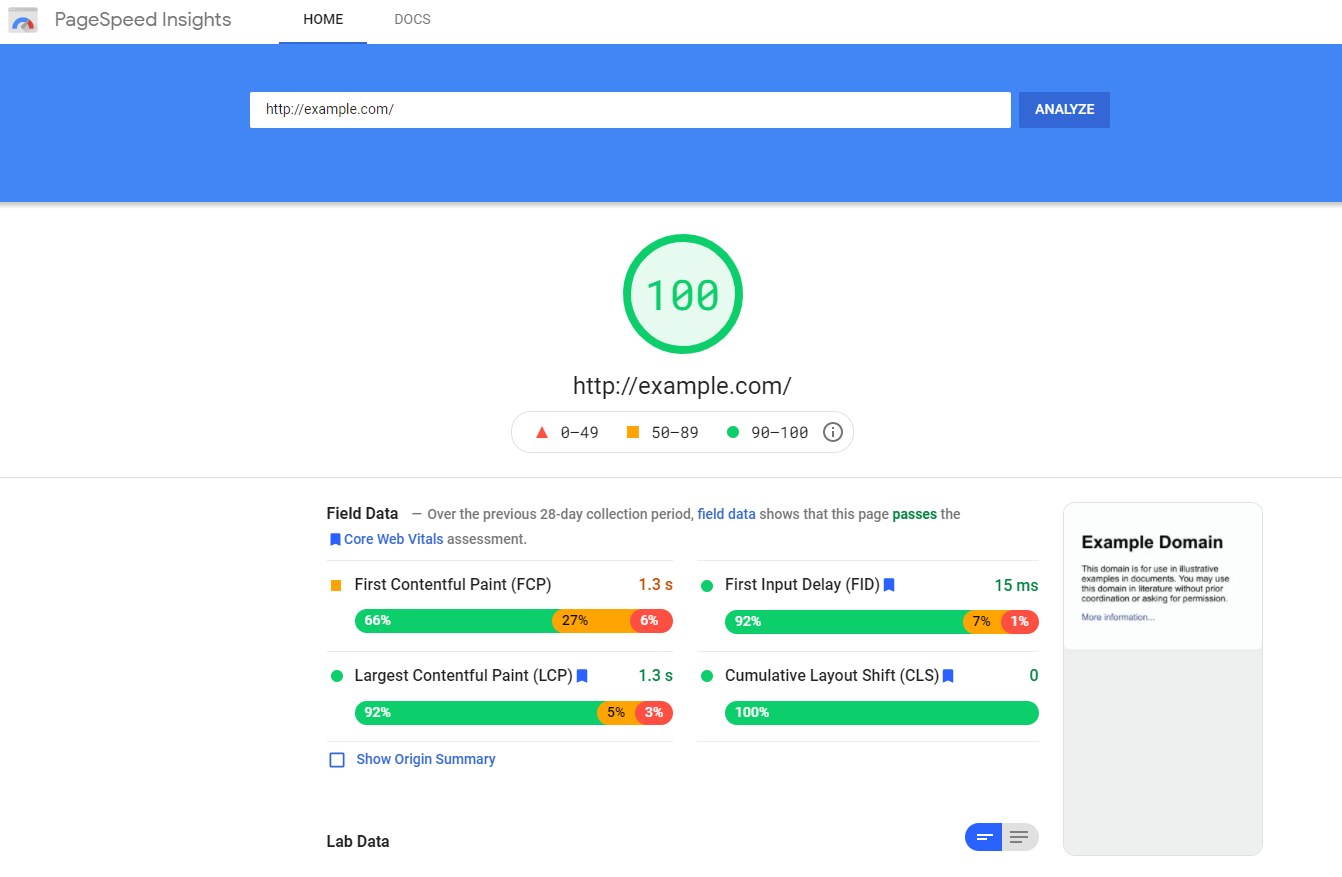
Your desktop site loading time should be at most one second, and mobile loading time should be no more than two seconds.
Every additional 0.5s it takes to load your site drastically increases your bounce rate. So, an improvement of 0.5 seconds will increase retention rates.
2. Improve existing content with missing subtopics
Your blog content could be outdated, and you might be missing out on new subtopics that are trending. For example, a blog post about space travel written two years ago could be missing out on new SpaceX events.
Republish your popular blog posts from previous years, even when there’s nothing new to add to them. If you’ve been working on a blog for a long time, consider creating a topic cluster. A topic cluster (or a Content Hub) is a collection of web pages on your website that are organized around a specific topic. Each web page delves deeply into a particular sub-topic.
Suppose you feel your competitor’s blog post receives more organic traffic despite having poorer content and domain authority. In that case, you can use Ahrefs’ Content Gap tool to find out which keywords you’re not targeting.
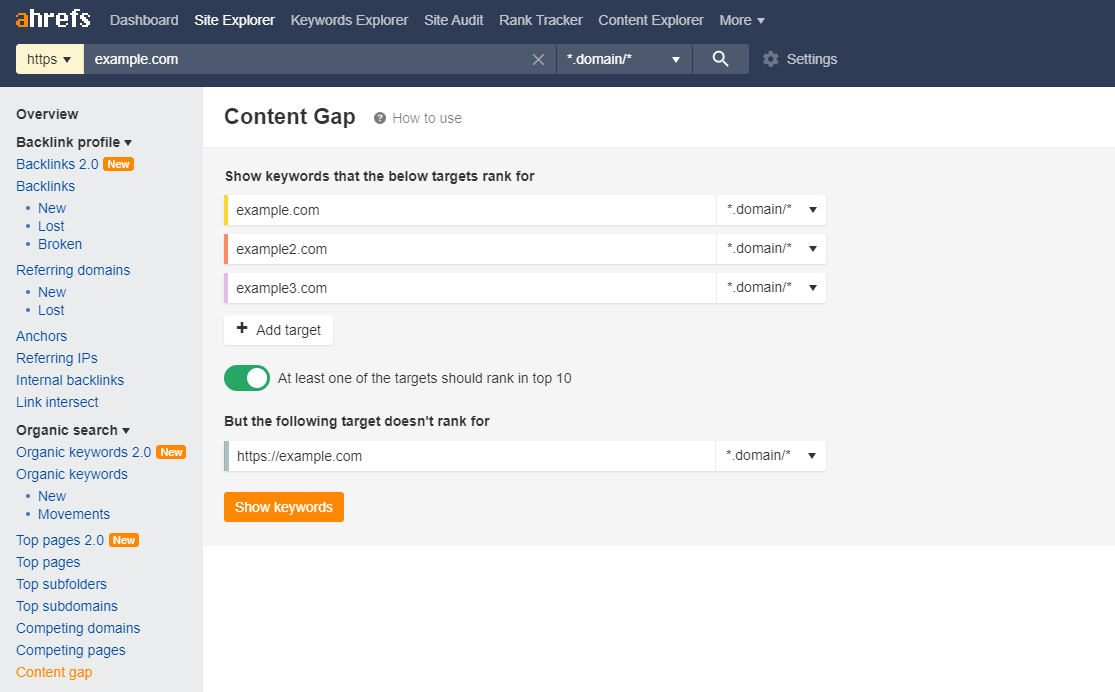
Most likely, they’re targeting keywords that you are not using in your article. Here’s how to use this tool:
- Enter the URLs of the two or three top-ranking pages for your target keyword.
- Enter your page’s URL at the bottom.
- Click Show keywords to see the keywords that one or more of the top-ranking pages rank for, but you don’t.
Ahrefs content gap tool provides a list of keywords you don’t know your competitors are targeting. It also lets you compare several competitors at the same time for more keywords.
3. Focus on user experience (RankBrain)
According to Google, user experience (UX) signals are the user’s third most important ranking factor. UX signals are so important that Google has a special tool—RankBrain— to monitor how users interact with search results and rank these results based on that.
If users click on an organic result and immediately leave the site, the site will lose ranking. On the other hand, if users click on a result and spend some time on the website, the site will gain ranking or retain its high rank.
RankBrain also monitors Dwell time and Click-Through rates. Dwell time refers to how long users stay on your site. Three minutes is a good dwell time for the average website.
You can also lower bounce rate and increase dwell time by doing this:
- Grab visitors’ attention with a well-designed website.
- Write engaging intro paragraphs.
- Use internal links to point visitors to relevant content on your website.
- Design a custom 404 page to help users find what they’re looking for on your website.
4. Link to other websites with relevant content
Linking out to relevant and authoritative content points your users to more information on a topic you’ve written about. Suppose you expect inbound backlinks from authoritative websites. In that case, you should show your willingness to link out to them from your website. But you should only link to web pages containing valuable content.
5. Add internal links to new pages
Internal links connect different web pages on your website. They help users and search engines navigate your web pages and distribute ‘link authority throughout your website.
Search engines also use the internal link’s anchor text to understand its context.
If you want new web pages to stand the best chance at ranking fast enough, you should add some backlinks leading to it from older content.
To find relevant internal linking opportunities, enter site:example.com “keyword” on Google search.
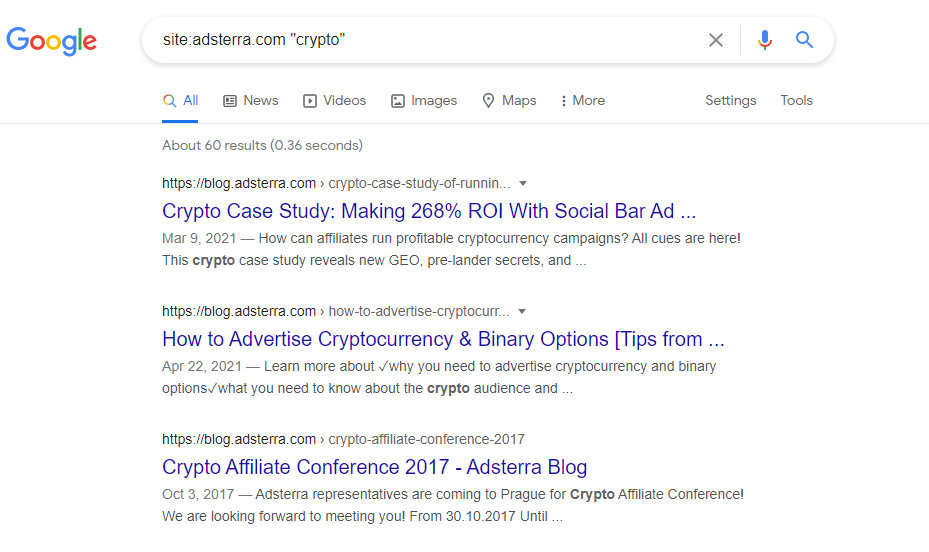
6. Write for humans before search engines
Avoid prioritizing search engines over the actual people interested in your work. Write your content for the end-user — humans who can read and buy what you’re selling. Search engines are just code — they can’t buy your products, interact with your social media, or become loyal customers. This may be one of our most important SEO tips.
What does it mean to write for humans first? Writing for humans means creating unique content that adds new value to already existing topics. When you put humans first, you’ll find yourself writing engaging content that search engines reward because search engines follow its users.
At the same time, you’ll be enhancing the user experience and building trust with your audience.
7. Rank for featured snippets
A featured snippet is a type of search result that appears at the top of Google’s SERP to answer a search query quickly. Here’s what they look like:
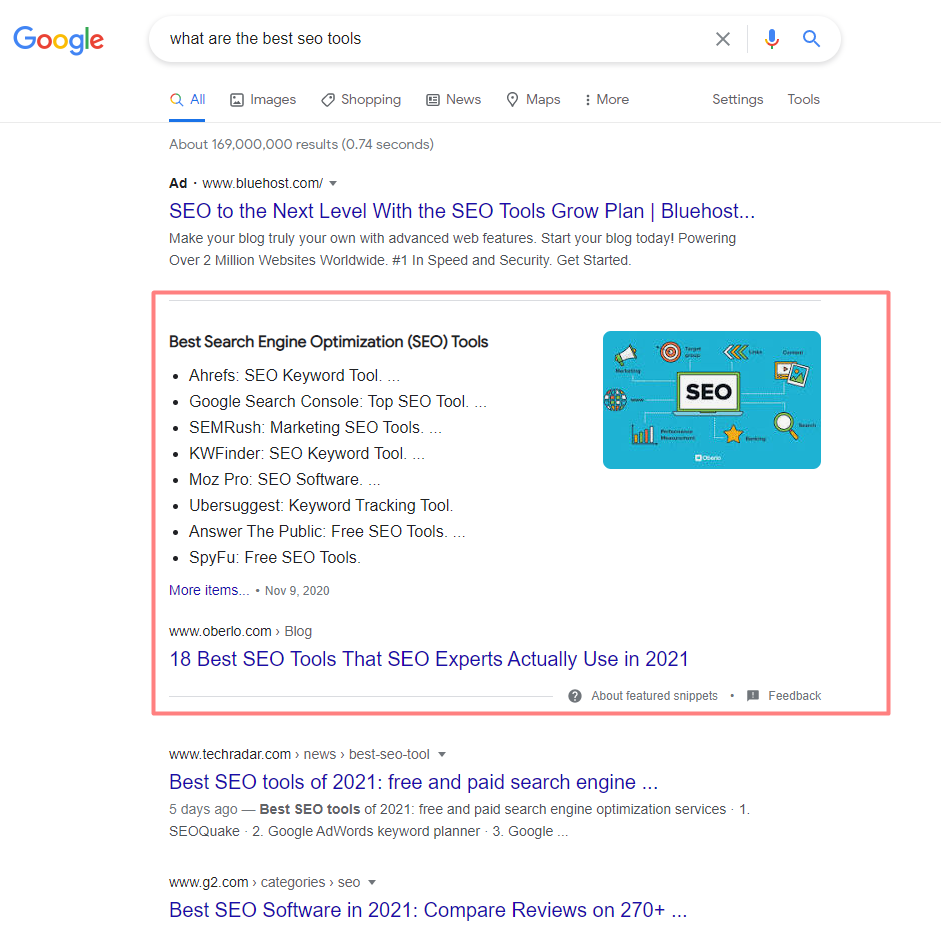
We have some insight on how to rank for featured snippets.
Use the paragraph format when trying to rank for question keywords like “how can I delete a file” or “what are the best SEO tools?
But if you’re trying to rank for a preposition (for, to, like, etc.), you should use a list format. You should also keep your content optimized for featured snippets by writing clear and concise content. Use headers for easy scanning and ensure cross-device usability.
8. Schedule annual content audits
Content auditing refers to a complete website analysis to see what web pages need to be updated, changed, or removed.
If you’re managing a WordPress website, you can conduct a content audit with Ahrefs’ free WordPress plugin. Go to plugins via admin dashboard and search for Ahrefs SEO WordPress Plugin. Install and activate it and follow instructions to see what needs updating or removing.
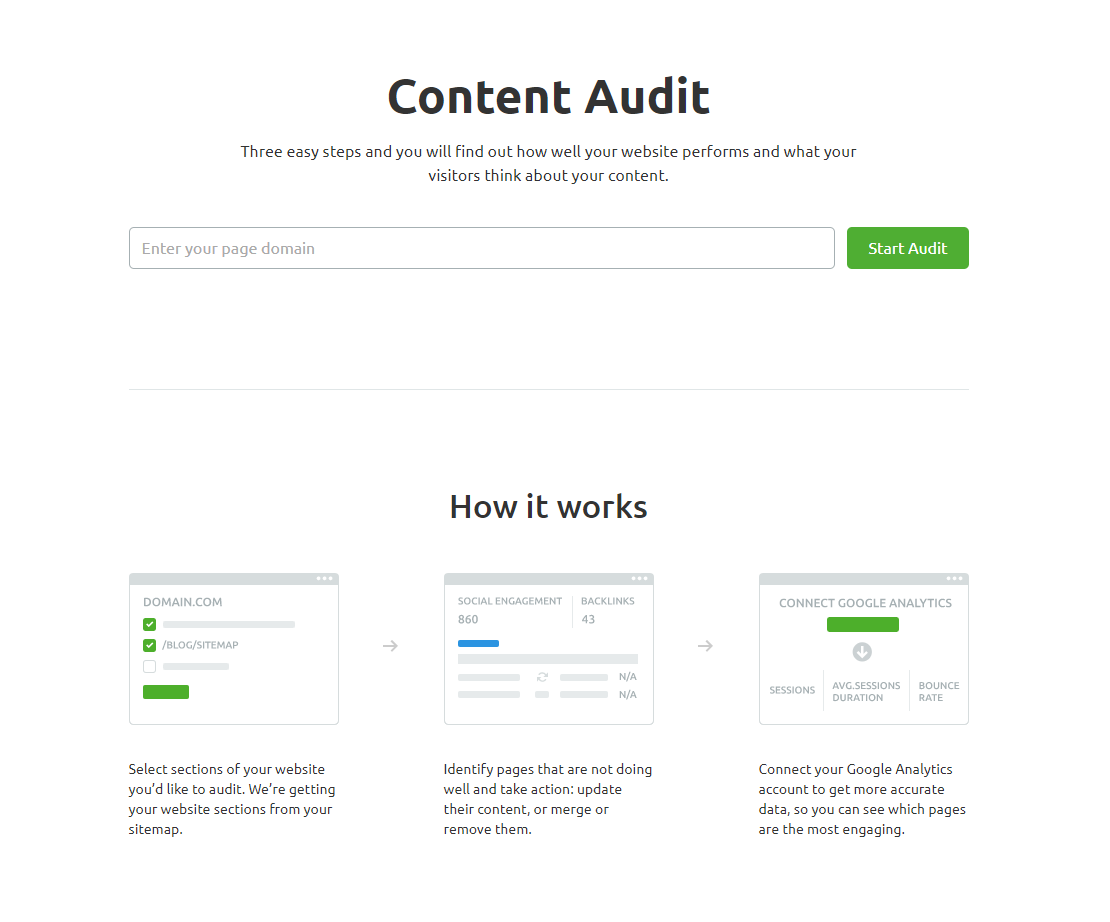
For non-WordPress websites, you can use SEMRush’s content audit tool.
9. Use a simple, readable URL structure
Readable URL structures tell users what to expect by clicking the URL. For example, users expect a blog article containing SEO tips when they see our post’s URL https://blog.adsterra.com/seo-tips/.
Avoid using URLs with numbers or characters, except hyphens. Avoid including words like a, an, the, but, or, in, etc. For example, this URL https://www.example.com/article/19525 doesn’t tell users what to expect from its landing page.
Like we mentioned in earlier paragraphs, Search engines follow users. You should use two to four words in a URL. Short and readable URLs are easy to type, memorable to users, and search engine-friendly.
10. Get more social signals
Social media and social signals are essential to your SEO strategy. They increase your website’s reach through shares, likes, tweets, and repins.
Here’s what you can do to get more social signals:
- Create engaging content that’s people will want to share.
- Add share buttons to your web pages and make them noticeable.
- Ask people to share your article in the closing paragraph.
11. Solidify your website’s mobile version
Mobile-first indexing means that Google considers your website’s mobile version as the primary (main) version.
Your website’s mobile version should be the priority in your SEO strategy. Poor mobile websites lead to a bad user experience and low SERP ranking. If your mobile site is accessed through an m-dot URL, like “m.example.com” Google recommends switching over to a fully responsive mobile site. Why? Google does not index m-dot URLs. Switching to a responsive mobile site forces Google to update the annotation and tell users your website is mobile-friendly.
You must also pay attention to your domain’s core web vitals through Google Search Console, or LightHouse.
12. Embed your videos in relevant posts
The video tab on Google search also shows web pages from the search results with relevant video embeds.
For example, if we check the Videos tab for space x falcon 9. The top results are not YouTube videos, but videos embed on the SpaceX website.
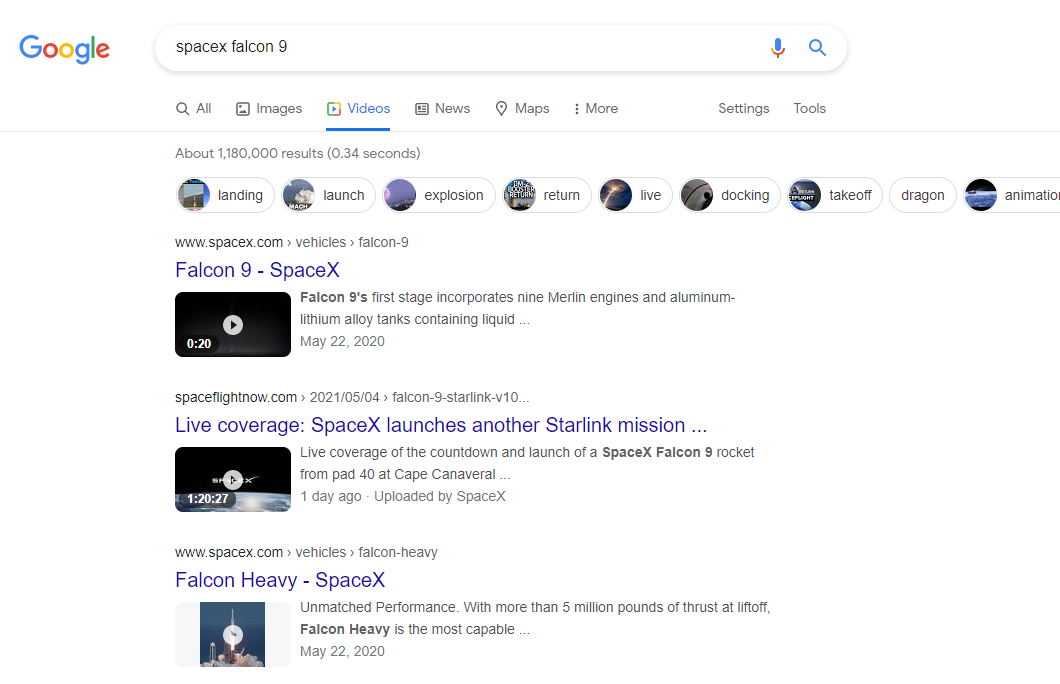
Video embeds are a great source of organic traffic for minimal effort. It also helps if your website’s niche is highly visual, like DIY crafts. Upload your videos on websites like YouTube and Vimeo to get an embed link.
13. Fix pages with broken backlinks
Backlinks to 404 pages are a waste of link authority. Broken backlinks can also frustrate your visitors. So, how do you discover broken backlinks on your website? Use Ahref’s site explorer to filter for 404 pages in the Best by Links report.
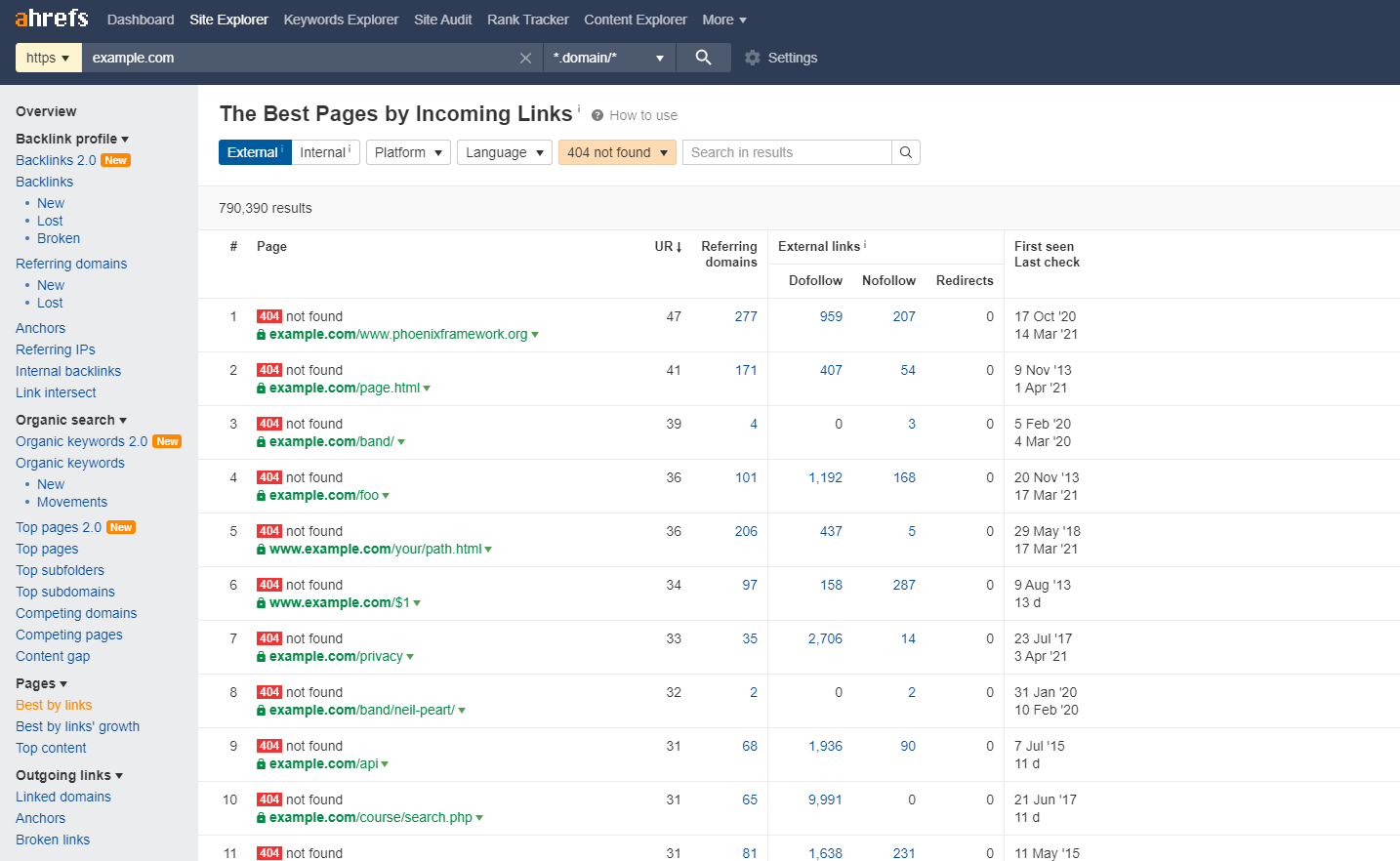
There are three ways to fix broken backlinks:
- Redirect: If the 404 page’s content now exists at a new webpage with a different URL, create a URL redirect to the new one.
- Replace: If the 404 page no longer exists, but you have a similar page on your site, redirect the old URL there.
- Request a link change: If someone made a mistake when linking to your web page, reach out to them with the correct URL.
Conclusion
We hope you can turn your SEO strategy around with the tips provided. SEO is a continuous process, you should use our SEO tips regularly. Create content targeting long-tail search phrases (e.g., best free pdf compressor high quality) and not short keywords (e.g., pdf compressor). Your path to success online starts with good optimization and then hosting ads on your website.
At Adsterra, we help you convert your site’s traffic to real revenue. With 24/7 live chat support, you can reach out to your manager and get viable advice on growing your revenue.
